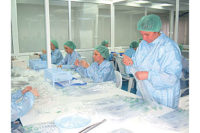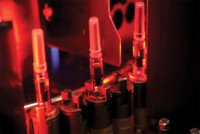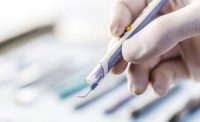Each year, the U.S. Food and Drug Administration logs some 100,000 reports of adverse events related to medical devices. More than a third of those are due to human error.
While medical device manufacturers have excelled at applying new technologies to diagnose and treat various maladies, they haven’t always done the best job of ensuring that their latest gizmos can be used comfortably and correctly by patients and healthcare providers.
One reason for this disconnect is that new medical devices are often the product of technological breakthroughs, rather than designed from the start to meet a specific need, says Michael E. Wiklund, general manager of United Laboratories’ human factors engineering practice, which helps companies develop safe, effective and usable products. As a result, product developers sometimes fail to account for who will be using the device, and how and where it will be used.
Human errors when operating medical devices are most often due to the following reasons:
- The device requires physical, perceptual or cognitive abilities that exceed those of the user.
- The environment affects operation of the device, and this effect is not recognized by the user.
- The environment impairs the user’s ability to interact with the device.
- The device is inconsistent with the user’s expectations about how it should operate.
- The device is used in ways that were not anticipated.
- The device is used in ways that were anticipated, but inappropriate, and adequate controls were not applied to prevent such use.
“A common usability design flaw is overestimating the ease with which the user will be able to perform manual tasks,” says Wiklund, who has co-authored or co-edited several books on human factors engineering, including Usability Testing of Medical Devices. “For someone with limited dexterity or visual acuity, doing something as simple as opening a device’s battery compartment can be a struggle.
“Sometimes you find that a button does not provide enough tactile feedback to reassure the user that he’s pressed it fully. As a result, the user might press the button twice, which could produce an undesirable outcome.
“The device could incorporate a display that’s not sufficiently bright to be readable in dim lighting. Or the device might emit a warning tone at a frequency that exceeds the ability of older individuals—men, in particular—to hear it.”
One way to foresee such problems is through usability testing. In this process, engineers invite potential users of the device to interact with a prototype. This hands-on testing should be done in an environment that’s as close as possible to the actual conditions in which the device will be used.
This can be done early in the design process—formative testing—or it can be done later, when the product is closer to finalization—validation testing. Either way, the goal is to collect both objective and subjective data.
“Objective data would include things like how many people performed the task successfully or how long it took to perform the task,” says Wiklund. “The latter measure would be important if a delay would cause harm, such as with an automated external defibrillator. If it takes 8 minutes to deliver a cardioverting shock, that’s not likely to save a life.
“Subjective data may be collected by asking users to rate a device’s perceived safety, usability, error resistance and other attributes.”
Unlike clinical trials, which evaluate the safety and efficacy of a device, usability testing requires a relatively small number of subjects. FDA guidelines suggest at least 15 representatives from each distinct group of users. For example, if a device will be used in both homes and medical offices, engineers might want to conduct a usability test involving at least 15 nurses and 15 laypersons, including some seniors.







